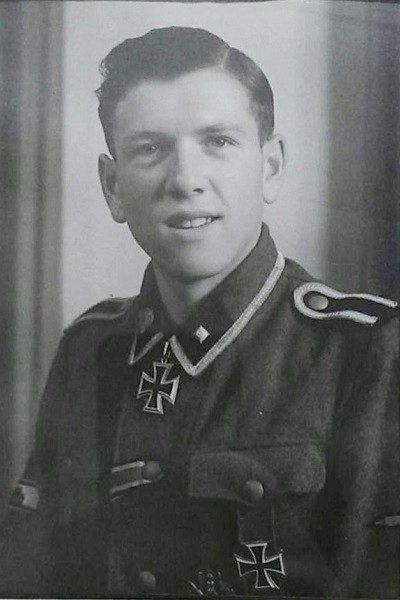Hirning, Hans (Waffen SS)
- Date of birth:
- November 14th, 1922 (Ulm, Germany)
- Date of death:
- April 30th, 1945 (Dürnholz, Czechoslowakia)
- Service number:
- SS-Nr.: // NSDAP-Nr.:
- Nationality:
- German (1933-1945, Third Reich)
Biography
Hans Hirning died on 30th April 1945 as Zugführer with the Kampfgruppe Böhmen-Mähren and the rank of SS-Oberscharführer.
00.02.1942: SS-Rottenführer, Granatwerftruppführer, 6. Kompanie, SS-Totenkopf-Infanterie-Regiment 1, SS-Totenkopf-Division
00.10.1942: promoted to SS-Unterscharführer
00.00.1943: promoted to SS-Oberscharführer
04.10.1944: reported MIA (VDK)
Do you have more information about this person? Inform us!
- Period:
- Second World War (1939-1945)
- Awarded on:
- October 24th, 1941
- Period:
- Second World War (1939-1945)
- Awarded on:
- 1941
- Period:
- Second World War (1939-1945)
- Awarded on:
- July 24th, 1942
- Period:
- Second World War (1939-1945)
- Awarded on:
- 1942
- Period:
- Second World War (1939-1945)
- Rank:
- SS- Rottenführer (Corporal)
- Awarded on:
- August 1942
- Period:
- Second World War (1939-1945)
- Rank:
- SS- Rottenführer (Corporal)
- Unit:
- Granatwerftruppführer, 6. Kompanie, SS-Totenkopf-Infanterie-Regiment 1, SS-Totenkopf-Division, AOK 1, Heeresgruppe D
- Awarded on:
- October 23rd, 1942
“The main road between Omytschkino and Bjakowo was vital for the German main supply route. The Russians had attempted to cut this route, which was supplying the entire II. Armee-Korps in the Demjansk. area. The enemy had moved an anti-tank gun to this road, thereby blocking this lifeline for the II. Armee-Korps and the SS-Totenkopf Division. Destroying this enemy anti-tank gun with artillery was not possible.
SS-Rottenführer Hirning had told his Kompanie and Bataillon commanders of his intentions to advance to the gun and destroy it. They asked what would what happen after he destroyed it, what if he was captured or killed? Hirning replied, 'I do not know the answer to that, the important thing here is that the anti-tank gun is destroyed. Anything else is insignificant.'
Later, on the 28.08.1942, he crept forwards with 6 kg of explosive charges through the hollow until he came within 30 metres of the enemy gun. He then ran forwards and attached the explosives to the gun. It did not explode and he had to do a fighting retreat back to his own lines. He was shot at by strong enemy fire as well as grenades, but he remained unscathed. He took it upon himself to make a return trip to this enemy gun, and one comrade volunteered to go with him to provide security. They once again perservered and reached the gun. This time, Hirning successfully destroyed this enemy anti-tank gun.
It was SS-Rottenführer Hans Hirning's actions that successfully removed this dangerous threat for the entire II. Armee-Korps. The supply route was re-opened. An enemy success here would have had unforeseen consequences."
- Period:
- Second World War (1939-1945)
- Period:
- Second World War (1939-1945)
- Period:
- Second World War (1939-1945)
Sources
- Photo 1: Igor Poul
- - MOONEY, PETER, Waffen-SS Knights and their Battles, Schiffer Pub Ltd, 2008.
- Bender R.J., Breyette T., Tank Killers, RJ Bender Publications, 2000, ISBN 0-912138-83-1
- Fellgiebel W.P., Elite of the Third Reich, The recipients of the Knight's Cross of the Iron Cross 1939-1945: A Reference, Helion & Company Limited, Solihull, 2003, ISBN 1-874622-46-9











